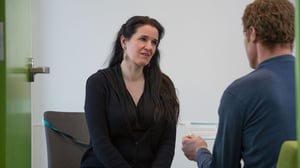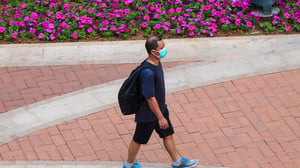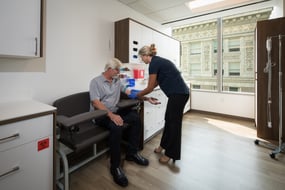Editor’s Note: This post was originally published on November 1, 2018 and has been recently updated to include the latest insights and best practices.
Diabetes is a disease that impacts millions of Americans from young to old. The NIH estimates there are approximately 34.2 million people, or 10.5% of the U.S. population living with this disease.
In the last 20 years, the rate of diabetes in America has tripled. The CDC estimates that over 30 million people are diabetic, and that 1 person in 4 is not aware of their condition. To learn more about the diabetes epidemic and what we can do to lower our risk factors, we sat down with Vera provider Dr. Bruce Heller to find out more. Here's what he had to say.
Q: What is diabetes?
Dr. Heller: Diabetes is a problem with how your body processes carbohydrates, which are found in sugary or starchy foods like desserts, rice, pasta, and bread.
There are two kinds of diabetes. Diabetes type 1 is the less common type. That’s where people aren’t able to produce insulin, a hormone that helps the body process carbohydrates. People can either be born with type 1 diabetes or develop it later in life.
Type 2 diabetes is much, much more common. It’s typically something that develops later in life. With type 2, the body makes insulin but its ability to use that insulin is decreased. Over time, your body makes less insulin and it becomes less and less effective because your body can become resistant to it.
Q: How common is diabetes?
Dr. Heller: Diabetes is really an epidemic and it’s related to dietary changes over the last few decades. Unfortunately, we’re starting to see more diabetes in younger and younger people. We used to almost never see type 2 cases with people in their 20s, and now we’re seeing it in teenagers and younger. This really has to do with obesity and decreased levels of activity.
Q: What are the biggest risk factors for developing type 2 diabetes?
Dr. Heller: If you have a history of diabetes in your family, you’re more likely to become diabetic. But, more important are the kinds of food you eat, whether or not you exercise, and your body weight. People who are overweight, don’t exercise, and have diets with lots of carbohydrates (like sodas, cookies, and other sugary foods) are much more likely to get type 2 diabetes.
One thing that’s important to know is that we have ways to identify something called prediabetes. Prediabetes is where your body isn’t handling carbohydrates normally, but it’s not so bad that you have actual diabetes. It’s kind of like a yellow traffic light, it’s a warning sign for the patient and provider to intervene and reverse the process. And in fact, we can reverse diabetes and prediabetes by making significant lifestyle changes.
We can reverse diabetes and prediabetes by making significant lifestyle changes.
Q: What lifestyle changes can reduce the risk of diabetes?
Dr. Heller: They really revolve around diet and exercise. For your diet, you want to eliminate processed or refined foods like sodas, cookies, crackers, and donuts. They’re delicious, but they’re bad for us.
For exercise, about 2-1/2 hours of walking per week is probably enough. That’s 30 minutes, 5 days a week. But, the more the better. Most Americans get much less than the minimum.
Maintaining a healthy weight is critical. Studies have shown that losing about 8-10% of your body weight, if you are overweight, significantly helps reduce diabetes or prediabetes.
Q: How do you help patients make positive changes to their diet?
Dr. Heller: I will do a brief diet summary or history and ask patients what they typically eat. Then I’ll go through that summary and show them that at every meal or snack, they have the opportunity to eat better. For example, if you eat a lot of white rice, you might want to change to brown rice.
People should focus on foods that have lots of fiber, because fiber helps slow down how fast your body absorbs sugar.
Q: When should you see your provider about diabetes?
Dr. Heller: Anyone with a family history of diabetes should get checked. If you are overweight or obese you should get checked. If you have a diagnosis of hypertension, you should get checked. And, if you have a history of cholesterol problems, get checked. Any unexplained symptoms like increased thirst, increased urination, numbness of extremities, and vision changes like blurred vision are also reasons to make an appointment with your provider.
And, if you have prediabetes or diabetes, don’t be discouraged. It’s an opportunity to make healthy changes so you can live with more vitality and well-being.
At Vera Whole Health, our providers and health coaches understand what it means to truly listen and fully embrace the time needed to hear your concerns and develop a goal-oriented plan in a safe and trusting environment — whether you’re seeking help with managing diabetes, healthy eating, maintaining an active lifestyle or other health and wellness challenges, we’re here and ready to help.
Sign up
Join our email list to receive the latest open positions, Vera Careers news, and more.





